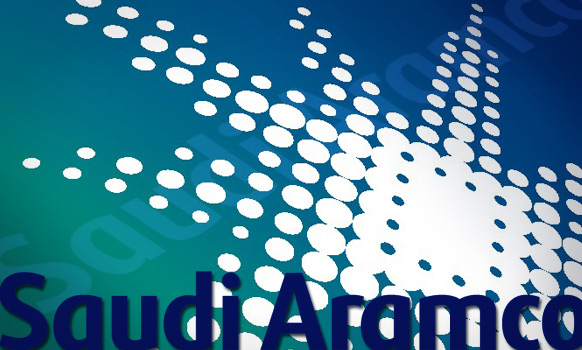- -Shares of the state-owned oil company rose to 35.2 Saudi riyals ($9.38) from 32 riyals in early deals in Riyadh, up 10% and hitting their daily limit.
- -The price gives Aramco a valuation of $1.88 trillion and makes it the largest listed company in the world.
- -Aramco’s public debut, which listed 1.5% of its shares locally on the Saudi Tadawul, is the largest on record — topping the $25 billion Alibaba raised when it went public in September 2014.

Saudi Aramco, the world’s largest initial public offering (IPO), surged past expectations as it debuted on the country’s stock exchange on Wednesday morning.
Shares of the state-owned oil company rose to 35.2 Saudi riyals ($9.38) from 32 riyals in early deals in Riyadh, up 10% and hitting their daily limit. The price gives it a valuation of $1.88 trillion and makes it the largest listed company in the world, comfortably ahead of Microsoft and Apple.
Aramco’s public debut, which listed 1.5% of its shares locally on the Saudi Tadawul, is the biggest on record — topping the $25 billion Alibaba raised when it went public in September 2014.
The oil giant has also surpassed its earlier valuation of $1.7 trillion, announced when share pricing was disclosed last week at the top of the market range. But the $1.88 trillion valuation remains below what the kingdom had initially targeted and relied heavily on local investors after the company canceled international roadshows due to lackluster foreign interest.
Aramco CEO Amin Nasser told CNBC at the event that the company was pleased with the day’s results.
“We are progressing based on what was decided, which is to (price) Aramco at 32 riyals per share, which was agreed based on full analysis and evaluation,” Nasser said.
“We are happy on the results today. And you have seen the market responds to our results, the company will continue to be the leader globally when it comes to the energy sector and at the same time we are looking at sustained and growing dividends to our investors. At the same time we continue our growth strategy, increasing profitability across cycles.”
The long-awaited IPO of world’s most profitable company forms the centerpiece of Crown Prince Mohammed bin Salman’s Vision 2030 program aimed at transforming the Saudi economy. The crown prince first floated the idea in 2016, stunning market observers by suggesting a head-spinning valuation of $2 trillion. That figure was brought down by financial advisors and banks earlier this year to a range of between $1.5 trillion and $1.7 trillion.
The launch follows a weeks-long local roadshow around the Middle East that saw Aramco’s local listing many times oversubscribed, according to banks advising the listing.
But regional and market experts have thrown cold water on the celebrations, calling the valuation a “hollow win” and acknowledging that while historic, much of the local investor demand was “manufactured.”
Gulf allies the United Arab Emirates and Kuwait are believed to have made substantial commitments to the Saudi project, with the Kuwait Investment Authority and Abu Dhabi reportedly investing up to $1 billion and $1.5 billion in the public offering, respectively, though they have not commented publicly on the matter.
Samba Capital, one of Aramco’s advisors, said in a statement last week that 10.5% of the offers came from foreign investors, while most were from Saudi funds and companies. Saudi Arabia has also turned to wealthy local families and Saudi billionaires to drum up support for the listing, according to reports.
Investor risks?
Ahead of the listing, Aramco detailed the vast number of risks its oil and gas business faces in a prospectus released in early November.
More obvious risks include the supply, demand and price of crude or how much oil the Saudi government decides to produce, as the country is the largest producer in OPEC.
Security risks remain high on that list — Aramco’s oil production was hit by drone attacks in September, which forced Riyadh to cut output by 50%. It took weeks for the Saudi government to restore capacity, though the recovery was far quicker than markets expected. Other risks include climate change and the company’s dependence on demand from Asia, its prospectus said.
CNBC

Leave a Reply
You must be logged in to post a comment.